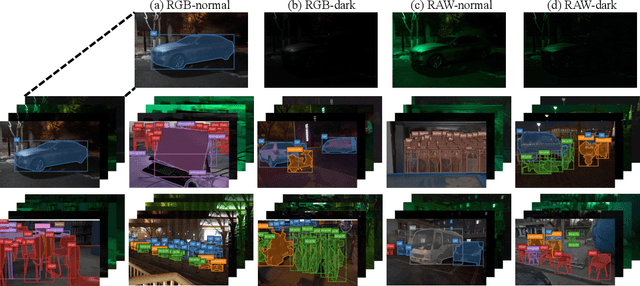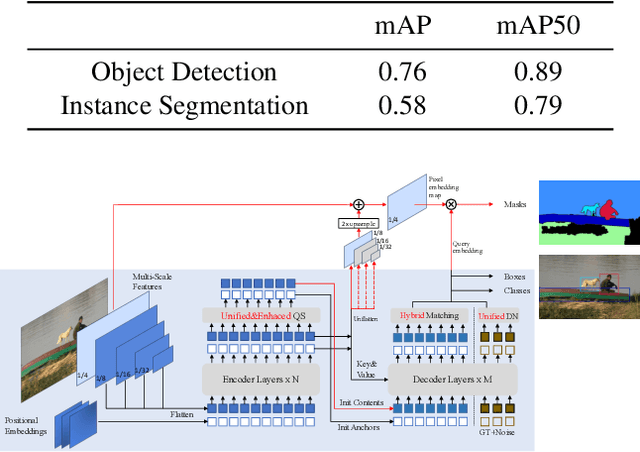Xiaoqian Lv
Path-Adaptive Matting for Efficient Inference Under Various Computational Cost Constraints
Mar 05, 2025Abstract:In this paper, we explore a novel image matting task aimed at achieving efficient inference under various computational cost constraints, specifically FLOP limitations, using a single matting network. Existing matting methods which have not explored scalable architectures or path-learning strategies, fail to tackle this challenge. To overcome these limitations, we introduce Path-Adaptive Matting (PAM), a framework that dynamically adjusts network paths based on image contexts and computational cost constraints. We formulate the training of the computational cost-constrained matting network as a bilevel optimization problem, jointly optimizing the matting network and the path estimator. Building on this formalization, we design a path-adaptive matting architecture by incorporating path selection layers and learnable connect layers to estimate optimal paths and perform efficient inference within a unified network. Furthermore, we propose a performance-aware path-learning strategy to generate path labels online by evaluating a few paths sampled from the prior distribution of optimal paths and network estimations, enabling robust and efficient online path learning. Experiments on five image matting datasets demonstrate that the proposed PAM framework achieves competitive performance across a range of computational cost constraints.
Technique Report of CVPR 2024 PBDL Challenges
Jun 15, 2024



Abstract:The intersection of physics-based vision and deep learning presents an exciting frontier for advancing computer vision technologies. By leveraging the principles of physics to inform and enhance deep learning models, we can develop more robust and accurate vision systems. Physics-based vision aims to invert the processes to recover scene properties such as shape, reflectance, light distribution, and medium properties from images. In recent years, deep learning has shown promising improvements for various vision tasks, and when combined with physics-based vision, these approaches can enhance the robustness and accuracy of vision systems. This technical report summarizes the outcomes of the Physics-Based Vision Meets Deep Learning (PBDL) 2024 challenge, held in CVPR 2024 workshop. The challenge consisted of eight tracks, focusing on Low-Light Enhancement and Detection as well as High Dynamic Range (HDR) Imaging. This report details the objectives, methodologies, and results of each track, highlighting the top-performing solutions and their innovative approaches.
Dual-Context Aggregation for Universal Image Matting
Feb 28, 2024Abstract:Natural image matting aims to estimate the alpha matte of the foreground from a given image. Various approaches have been explored to address this problem, such as interactive matting methods that use guidance such as click or trimap, and automatic matting methods tailored to specific objects. However, existing matting methods are designed for specific objects or guidance, neglecting the common requirement of aggregating global and local contexts in image matting. As a result, these methods often encounter challenges in accurately identifying the foreground and generating precise boundaries, which limits their effectiveness in unforeseen scenarios. In this paper, we propose a simple and universal matting framework, named Dual-Context Aggregation Matting (DCAM), which enables robust image matting with arbitrary guidance or without guidance. Specifically, DCAM first adopts a semantic backbone network to extract low-level features and context features from the input image and guidance. Then, we introduce a dual-context aggregation network that incorporates global object aggregators and local appearance aggregators to iteratively refine the extracted context features. By performing both global contour segmentation and local boundary refinement, DCAM exhibits robustness to diverse types of guidance and objects. Finally, we adopt a matting decoder network to fuse the low-level features and the refined context features for alpha matte estimation. Experimental results on five matting datasets demonstrate that the proposed DCAM outperforms state-of-the-art matting methods in both automatic matting and interactive matting tasks, which highlights the strong universality and high performance of DCAM. The source code is available at \url{https://github.com/Windaway/DCAM}.
 Add to Chrome
Add to Chrome Add to Firefox
Add to Firefox Add to Edge
Add to Edge